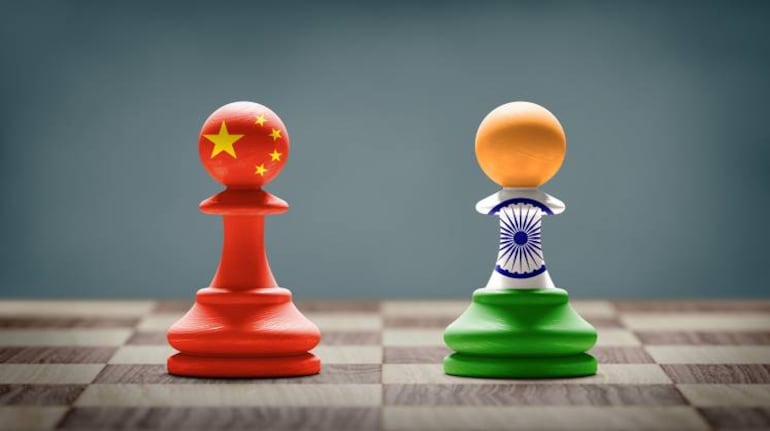



Both India and China lie at the heart of the geopolitical churn in the Indo-Pacific, with their bilateral relationship holding significant implications for the future of the world order. While India is pursuing a policy of multi-alignment, it increasingly seems to be caught between two emerging power centres. On one side is a rising China, which is seeking to actively reshape the international order to facilitate its rise to the centre-stage of world affairs; on the other is the US, which is working to boost domestic strength, revitalise old alliances and fashion new partnerships in order to sustain its preeminence.
So what does this mean for the relationship between India and China? After all, China is not only India’s largest neighbour but a key trading partner. At the same time, the two sides increasingly appear to be moving towards greater friction and hostility along the disputed boundary. Will the intensified tensions result in more conflict, even if of just low-intensity variety? Or is there a possibility for some sort of new peaceful equilibrium, perhaps even friendship, between the two?
Intersecting Zones Of InfluenceTo my mind, three structural factors make it difficult for India and China to get close.
First, as both have risen over the past three decades, their interests have not only expanded but also now increasingly intersect across each other’s traditional zones of influence. Beijing’s intensified engagement in the Indian subcontinent and Delhi’s more public expression of concern around issues of the South China Sea are examples of this.
What’s more, both sides have greater capabilities today and have demonstrated increased political willingness to pursue those interests. An example of this is the increased military capacity along the disputed border leading to the two forces brushing up against each other more frequently.
Growing Power And AsymmetrySecondly, as their power has grown so has the asymmetry between the two. This differential has resulted in Beijing being more risk-tolerant and resorting to greater coercion to confine India within the subcontinent.
China’s common refrain that India should put the boundary issue in its “proper place in bilateral relations” and accept the coercively-altered status quo in Eastern Ladakh is an example of its view that India should acknowledge the power differential and act accordingly.
Such an accession will not only be politically damaging for any Indian establishment but also strategically imprudent. In response, India has sought to resist while talking, de-risk in certain domains and counterbalance with actors like the US and Australia.
This feeds into the third structural factor, i.e., the deepening competition between China and the US. China is quite anxious and vocal about its displeasure with India’s unprecedented proximity with the US.
A Delhi closely aligned with Washington presents a formidable hurdle for Beijing’s global ambitions. But Chinese scholars also acknowledge that the Washington-Delhi embrace is not necessarily of an alliance variety; there exist limitations, grievances, complications and divergences of interests.
Consequently, Beijing repeatedly urges Delhi to view bilateral relations in the context of the once-in-a-century changes taking place in the world and think of bilateral cooperation from the perspective of their respective national rejuvenation. Yet, there is precious little that China has done to demonstrate appreciation for India’s interests and aspirations.
Its policy has predominantly relied on coercion rather than accommodation. This has further damaged the already low levels of trust between the elites and populations on both sides.
Sliding Public OpinionFor instance, the last formal meeting between Narendra Modi and Xi Jinping was in October 2019. The informal chat they had in Bali last year didn’t move the needle at all. Public opinion, meanwhile, has also sunk. Indians have historically held a rather negative view of China, though there was a brief period of positivity around China’s development achievements around 2006-2008.
This sentiment has since faded, with recent Pew polling data showing that negative opinions about China in India rose from 46 percent in 2019 to 67 percent in 2023. Other surveys also reflect this trend, which has sharpened since the events of 2020.
Likewise in China, India is increasingly being viewed from a threat-prism. For instance, a recent poll by Tsinghua University found that merely 8 percent of Chinese people had a favourable opinion of India.
Politics Trumps EconomicsDespite all the above, it is evident that trade between India and China is continuing to expand. For many, this is a contradiction. Such views, however, miss the point that increasingly both sides are approaching trade from a strategic prism.
In this context, India has been open to trade and investment expansion merely to the extent that there may be few suitable alternatives and doing so serves the requirement of intermediate and capital goods for its electronics and manufacturing sectors. This is critical for India’s rise as a major power.
At the same time, Delhi has sought to de-risk in emerging technologies, core telecom systems and what are seen as strategic domains. This approach needs far greater refinement and precision targeting.
In essence, even if the bilateral trade figure continues to expand, the relationship between India and China will remain difficult and volatile, for in today’s era, politics trumps economics.
Manoj Kewalramani is the Chairperson of the Indo-Pacific Studies Programme and Research Fellow-China Studies at the Takshashila Institution. Views are personal, and do not represent the stand of this publication.Discover the latest Business News, Sensex, and Nifty updates. Obtain Personal Finance insights, tax queries, and expert opinions on Moneycontrol or download the Moneycontrol App to stay updated!
Find the best of Al News in one place, specially curated for you every weekend.
Stay on top of the latest tech trends and biggest startup news.